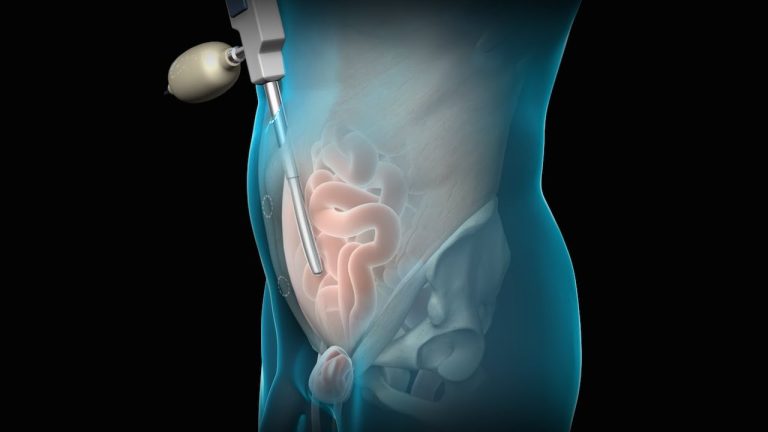
Post-traumatic stress disorder, or PTSD, is a relatively new diagnosis in psychotherapy. PTSD was not officially recognized as a disorder until the 1980s, thanks to the efforts of American war veterans who encountered it. PTSD is often associated with people who have experienced war, but it can develop from any traumatic event.
Therapists say that often people don’t even realize they have PTSD, attributing the disorder’s symptoms to depression or common stress.
Table of Contents
Post-traumatic Stress Disorder and Its Symptoms
There are two varieties of PTSD: classic and complex. Classical PTSD can occur as a result of sudden life- and health-threatening events: a car accident, assault, sexual assault, or terrorist attack, for example. This type of PTSD can develop in the person who has been exposed to it as well as in his or her relatives or witnesses to the event.
Complex PTSD develops as a result of prolonged traumatization. Usually it’s connected with relations with people in which there is a threat to life and health, humiliation of human dignity, restriction of freedom. More often, complex PTSD develops as a result of heavy violence in childhood, either physical or sexual. For adults, the cause may be domestic violence, imprisonment with inhumane treatment, or long periods of being held hostage. Here the threat is not so much to life and health as to the personal aspects of the psyche. As a result of these traumatic events, there is a threat to identity, the concept of seeing the world and oneself in it.
The classical variant of PTSD is already included in the International Classification of Diseases, and will appear in the new version of the ICD. PTSD diagnosis cannot be made immediately after a traumatic event – at least a month must pass. Acute reaction to stress at first is natural, but if the condition doesn’t improve, it’s necessary to see a specialist.
Classical PTSD has several symptoms:
- Constant experience of traumatic events: recurrent nightmares, images invading consciousness, bright memories which lead to sensation that the event happens again.
- Avoidance. The person avoids thoughts, any feelings or reminders that are associated with traumatic events.
- Living with a sense of threat. The person is extremely vigilant, always waiting for danger and reacts sharply to events, even if they don’t pose a threat, like while completing tasks at work, playing at Bet22, or working out.
- Complex PTSD is characterized by these same symptoms and three additional groups.
- Emotional dysregulation. The person easily gets upset because of small problems or most of the time feels depressed and has fluctuating moods.
- Negative self-image. The person lives with chronic feelings of guilt, for example, thinking that he could have prevented the development of events or somehow influenced their outcome. He or she may constantly feel like a defective, ruined, incorrect and broken person.
- Interpersonal difficulties. The person avoids getting close to other people and feels alienated and different.
Emergence of the Disorder and Its Consequences
The World Health Organization estimates that most people encounter events during their lifetime that could lead to the development of PTSD, but the average risk of developing PTSD as a result of trauma is estimated at only 4%. Among the most common such events are the unexpected death of a loved one, witnessing the death or serious injury of another person, armed robberies and car accidents, and a life-threatening serious illness.
The highest risk of developing PTSD is in trauma such as sexual violence: in 19% of cases, a person can get PTSD. There is also a high risk if a person has been kidnapped, at 11%. Among those who have participated in combat, or witnessed brutality in war, or lived in a war zone, the risk of developing PTSD is 4-5%. However, if PTSD does develop because of hostilities, it’s the longest in duration, averaging about 13 years.
PTSD is a complex disorder, especially if the trauma occurred during childhood and involved physical or sexual abuse. “This type of trauma impairs overall personality development. Moreover, PTSD is often accompanied by other disorders that aggravate its course. For example, sleep disorders or addiction: a person begins to abuse alcohol, drugs, take medications that numb the pain and affect the mental state. PTSD is often accompanied by depression, anxiety disorders, personality disorders up to psychosis. People begin to lead a lifestyle that can endanger their health or drive themselves to suicide.
The most difficult cases in PTSD therapy are if a person has undergone personality changes, distorted perceptions of themselves, other people and the world. The person begins to live as if in a warped space. He constantly blames himself, feels ashamed, seems ‘dirty’ to himself, feels disgust for himself, especially if the trauma was associated with sexual violence. There is also a problem with limited feelings: the person ceases to experience certain emotions, he does not feel joy, all feelings are dulled. In other situations, on the contrary, such a person can be very active, excitable, resentful, suspicious.
One of the most severe consequences of trauma is dissociative personality disorder. After severe trauma, the personality sort of doesn’t integrate as a whole, it remains broken up into separate pieces. And the interaction between these personalities within is not established. Personalities replace each other, and a person loses pieces of his life, he doesn’t remember what happened to him at certain periods.
PTSD Therapy
In the first few days after a trauma, when a person has an acute reaction to stress, no treatment is needed. Here you just need to be there, be attentive, and provide safety. If the person wants to talk, you need to talk; if he or she doesn’t want to talk, you don’t need to force him or her. It’s best to go after the needs of the traumatized person himself, and most importantly, keep him safe.
If PTSD has already been diagnosed, it’s necessary to begin therapy with a psychologist. Most international guidelines on PTSD treatment methods state that cognitive-behavioral therapy has the most proven efficacy. The second most effective therapy is Eye Movement Desensitization and Processing.
A person with PTSD tends to avoid any encounter with experiences that remind him or her of the trauma. But it’s this avoidance that, like cement, floods the painful symptomatology. The therapist’s job, by teaching techniques that help reduce stress arousal, is to help the person face that trauma. Re-experiencing repressed emotions in a safe environment gives the person a chance to face the negative experience and make sure it doesn’t repeat itself.
Another block of trauma work involves looking for destructive beliefs that have developed as a result of trauma. For example, a belief about one’s culpability for what happened, a belief about one’s own “dirtyness” that happens after sexual trauma. This set of beliefs causes a person to lock himself within four walls, to deprive himself of pleasures, to chew over and over in his head what has happened to him. And as a result, he finds evidence in his present life that he deserved it. Without working with these beliefs, there is a risk that the person will slip back into the symptomatology of post-traumatic stress disorder.
During therapy, the person can try to build the traumatic event into their biography and overall context – to understand the significance of the trauma, to evaluate the experience, and to come to terms with it.
How PTSD Affects Life
Post-traumatic stress disorder affects relationships with people. The person feels misunderstood, ‘dirty,’ guilty, and feels emotionally blunt. People who used to pique his interest are at best nothing, and at worst anxiety or panic. The person wants to hide all the time. Even if people get rid of acute symptoms, they continue to avoid communication, which is very common after trauma. They may communicate, but they don’t get close. They may want to get close, but they’re afraid to.
Men with PTSD are often afraid that the memories may cause harm to people close to them. They fear their breakdowns, aggression, and may become distant – abusing alcohol, leaving home. This is how they try to protect themselves from themselves, and loved ones perceive this as a betrayal, especially if they have made a lot of effort to help deal with his traumatic experience. That is why very often men start drinking – alcohol allows them to cope with anger over their powerlessness.
PTSD can also affect the professional sphere to some extent – if a person has beliefs of his own worthlessness, if he doesn’t get enough sleep, can’t concentrate and becomes distant from people, it becomes more difficult for him to set and solve tasks, to compete, to reflect.
The psychologist notes that social support is very important for traumatized people – if it isn’t available, the risks of developing PTSD are higher and recovery is more difficult. If there are people around who help, a person has increased resources to process this trauma, not to be destroyed by it, not to lose faith in themselves and other people. Support, understanding, and empathy are extremely important. It shouldn’t be pity, but help in processing the trauma, in getting back to a healthy life, a future







